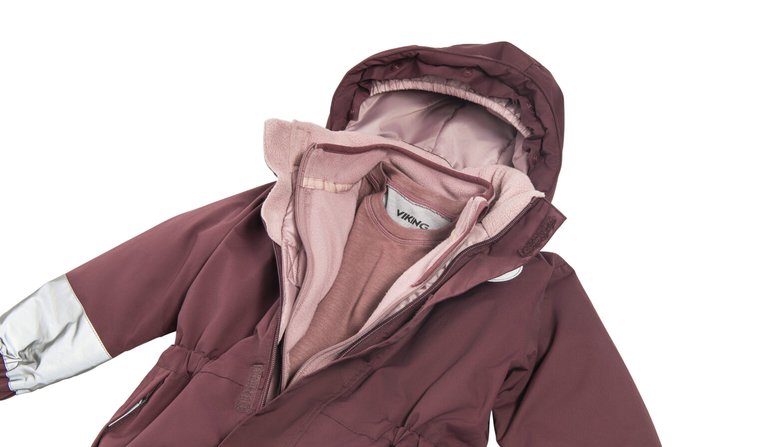
Cart is empty

In colder weather, it is important to dress appropriately before going outdoors. Intuitively, we choose warmer clothes. However, in cold weather, it is important not only what clothes we wear but also how we layer them. To ensure a warm and comfortable outdoor experience, let us introduce you to "layering" and suggest some options.
Clothing layering is an increasingly popular trend. The principle is simple - instead of wearing one thick garment, it is advisable to choose several thinner "layers" adapted to environmental conditions and planned physical activity. Proper layering not only helps to stay warm and protected from snow but also prevents overheating. Layering also allows easy adaptation to sudden changes in weather or physical activity by adding or removing layers. In cool weather, two layers are often chosen, while in cold, wintry conditions, three layers are recommended:
Base layer should be thin and close to the body. It’s like a second skin and must not restrict movement and has to be comfortable. Synthetic or merino wool fabrics are often chosen for the first layer. Merino wool can be made up to 7 times thinner than other wool fabrics and doesn't irritate the skin. It is suitable for summer because merino wool provides a cooling sensation. This layer not only retains warmth but also allows moisture to evaporate and lets the skin breathe. In winter, long-sleeved shirts with a high neckline are recommended, and in summer, short-sleeved ones. For particularly cold weather, it is advisable to wear merino wool socks ensuring they are higher than the shoes. These socks should be made of merino wool or contain at least 10% synthetic materials to aid moisture evaporation. Traditional cotton socks absorb moisture and lock it in, causing discomfort and cold. For more active pursuits or additional comfort, consider socks with extra elastic bands on the inner side of the foot, heel, or around the ankle to keep the socks in place.
Check out the children’s thermal underwear collection – soft, breathable, and comfortable like a “second skin,” perfect for everyday wear and outdoor activities.
Mid-layer should be warmer than the first but still maintain air and moisture permeability. This layer is designed to insulate heat and should not be as tight as the first. A thicker merino wool sweater or fleece jumper made of woven polyester fiber is recommended. It would benefit the wearer if this garment could be easily put on and taken off, allowing adaptation to changing weather conditions or physical activity.
Discover the collection of fleece jackets and overalls – warm, soft, and ideal for walks, playtime, and winter adventures.
Outer layer is the top layer of clothing designed to protect against harsh weather conditions such as rain, wind, and cold. When choosing a jacket, it should be waterproof and windproof. Pay attention to the insulation material too. The same criteria apply when choosing trousers. If you plan to walk in the snow or go skiing, longer ski trousers are recommended to fit inside the boots. Convenient trousers should have large enough pockets to hold frequently used items, such as gloves or a phone.
Explore the winter outerwear collection for kids – waterproof jackets, snowsuits, and parkas that provide warmth and protection all season long.
In addition to these three layers, winter outdoor clothing should include such accessories as hats, gloves, and neck protection:
• For the neck, we recommend neck gaiters for their functionality – they can cover not only the neck but also part of the face when needed. The gaiter must be made of moisture-permeable materials. Merino wool or fleece gaiters are suitable for this purpose.
• Gloves are as important as other clothing items – they should insulate heat, be waterproof and windproof, and have the ability to evaporate moisture.
• If it's cold outside, it's advisable for the hat to cover the ears. Since layering hats can be challenging, choose a hat of the appropriate thickness. Merino wool or fleece materials help the hat be more versatile and allow the head to breathe. If it's exceptionally cold or it’s raining, choose a hat that fits under a hood.
When encountering the concept of layering for the first time, it may seem a bit confusing. However, it's helpful to remember three basic rules:
1. Three layers: the first is snug and thin like the second skin, the second is loose and warm, and the third protects against rain, wind, and cold.
2. Fabrics should be breathable. Merino wool or synthetic fabrics are the most popular choices.
3. Layers can be added or removed based on comfort, changing weather conditions, or physical activity.
With the right clothing, there is no bad weather!
Share on social media!